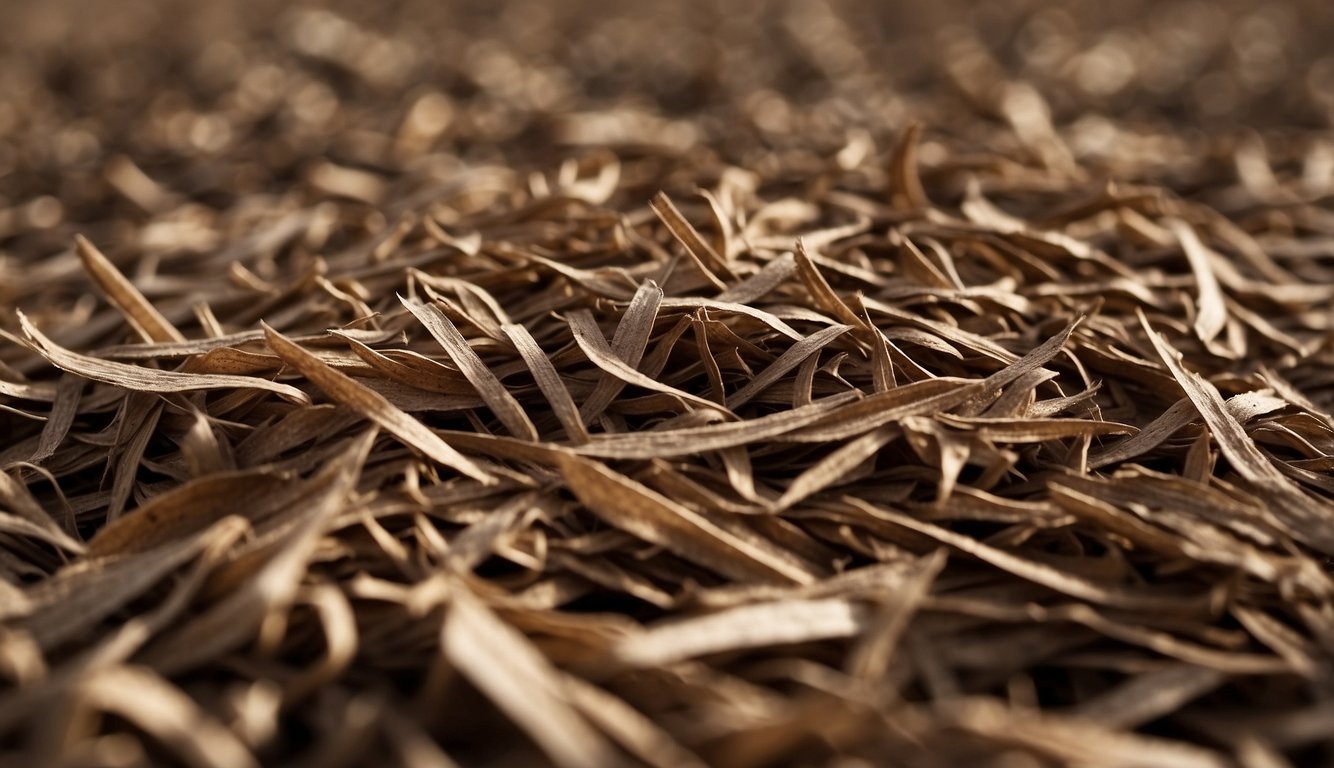TheHerbProf.com is a treasure trove of knowledge for those interested in natural healing and herbal remedies. The website is run by Paul Johnston MD. A naturopathic who has not only received extensive education in the field but also has personal experience in self-healing.
Shredded cardboard mulch is a cost-effective and eco-friendly solution to maintain a healthy garden.
It is an organic matter that can improve soil health by retaining moisture, suppressing weed growth, and adding nutrients to the soil.
Using shredded cardboard mulch has many benefits.
It is a great way to recycle cardboard boxes and reduce waste. Shredded cardboard mulch is also a natural and chemical-free way to suppress weed growth.
It can also help improve soil health by adding organic matter to the soil.
Benefits of Shredded Cardboard Mulch
As a gardener, I have found that using shredded cardboard as mulch provides numerous benefits for my garden. Here are some of the benefits of using shredded cardboard mulch that I have observed:
Improves Soil Structure and Health
Shredded cardboard mulch is an excellent source of carbon, which is an essential nutrient for soil microorganisms.
These microorganisms break down the cardboard over time, which improves soil structure and health.
The cardboard also helps to improve soil aeration, which is essential for healthy plant growth.
Additionally, the decomposed cardboard adds organic matter to the soil, which improves soil fertility.
Suppresses Weeds Effectively
One of the most significant benefits of using shredded cardboard mulch is its ability to suppress weeds effectively.
When applied correctly, the cardboard blocks sunlight from reaching weed seeds, preventing them from germinating.
This reduces the need for hand weeding or herbicides, which can harm beneficial insects and microorganisms in the soil.
Enhances Moisture Retention
Shredded cardboard mulch helps to retain moisture in the soil by reducing evaporation.
The cardboard creates a protective layer that keeps the soil cooler and prevents water loss.
This is especially beneficial during hot and dry weather conditions when water is scarce.
Encourages Earthworm and Microorganism Activity
Shredded cardboard mulch encourages earthworm and microorganism activity in the soil.
Earthworms are essential for soil health as they help to break down organic matter, improve soil structure, and increase nutrient availability.
Microorganisms also play a vital role in soil health as they break down organic matter and help to release nutrients for plant uptake.
Preparing Cardboard for Mulching
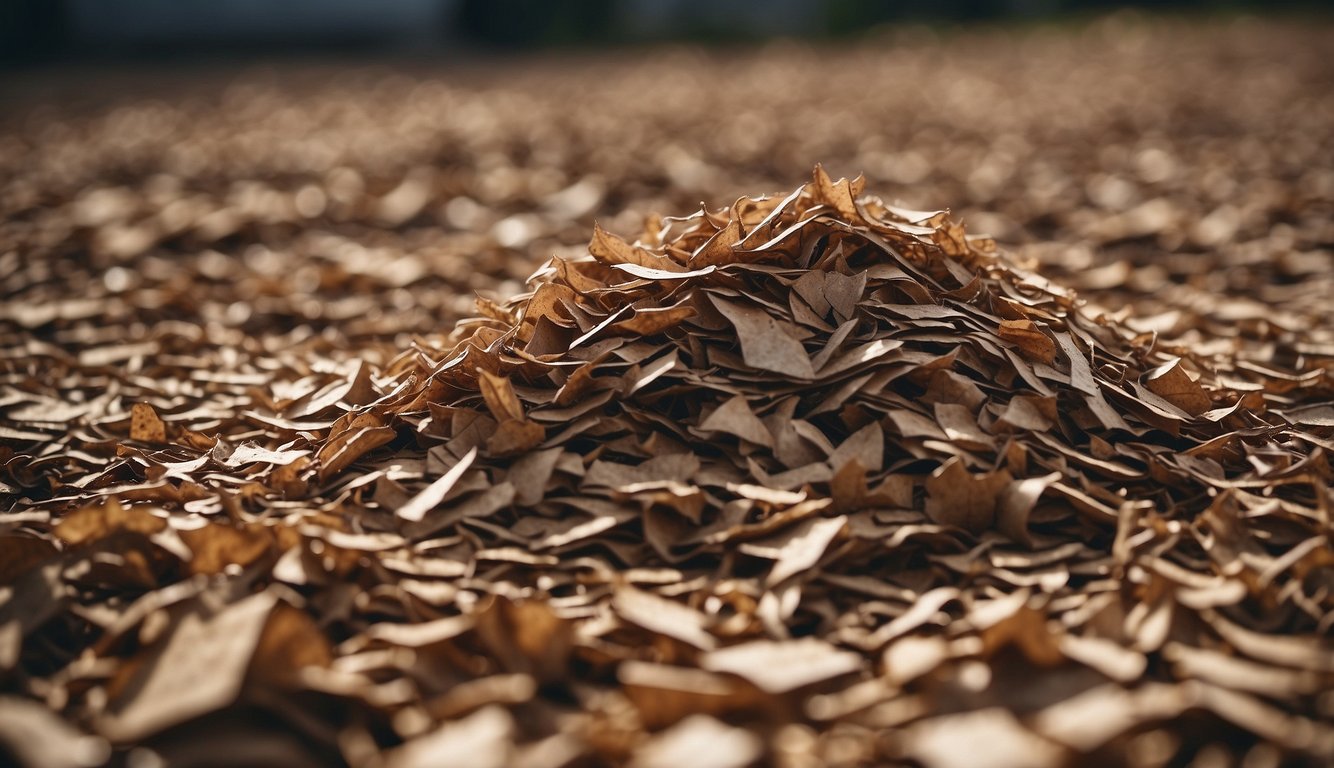
As a gardener, I have found that using shredded cardboard as mulch is an effective and eco-friendly way to suppress weeds, retain moisture, and improve soil quality.
However, before using cardboard as mulch, it is important to properly prepare it.
In this section, I will share my knowledge on how to prepare cardboard for mulching.
Selecting the Right Cardboard
When selecting cardboard for mulching, make sure to choose corrugated cardboard rather than paperboard or waxed cardboard.
Corrugated cardboard is thicker and more durable, making it better suited for mulching.
Additionally, make sure to avoid using cardboard that has been treated with chemicals or has a glossy finish, as these can be harmful to plants.
Removing Tapes and Labels
Before shredding the cardboard, make sure to remove any tapes and labels.
This can be done using a box cutter or scissors. However, make sure to be careful not to cut the cardboard itself.
Any remaining tape or label residue can be removed once the cardboard has decomposed in the garden.
Shredding and Soaking Techniques
Once the cardboard has been prepared, it can be shredded using a paper shredder or by hand.
Shredding the cardboard into small pieces will help it decompose more quickly and evenly in the garden.
After shredding, make sure to soak the cardboard in water for a few hours before applying it to the garden.
This will help the cardboard break down more quickly and prevent it from drying out too quickly in the garden.
Application Methods for Cardboard Mulch
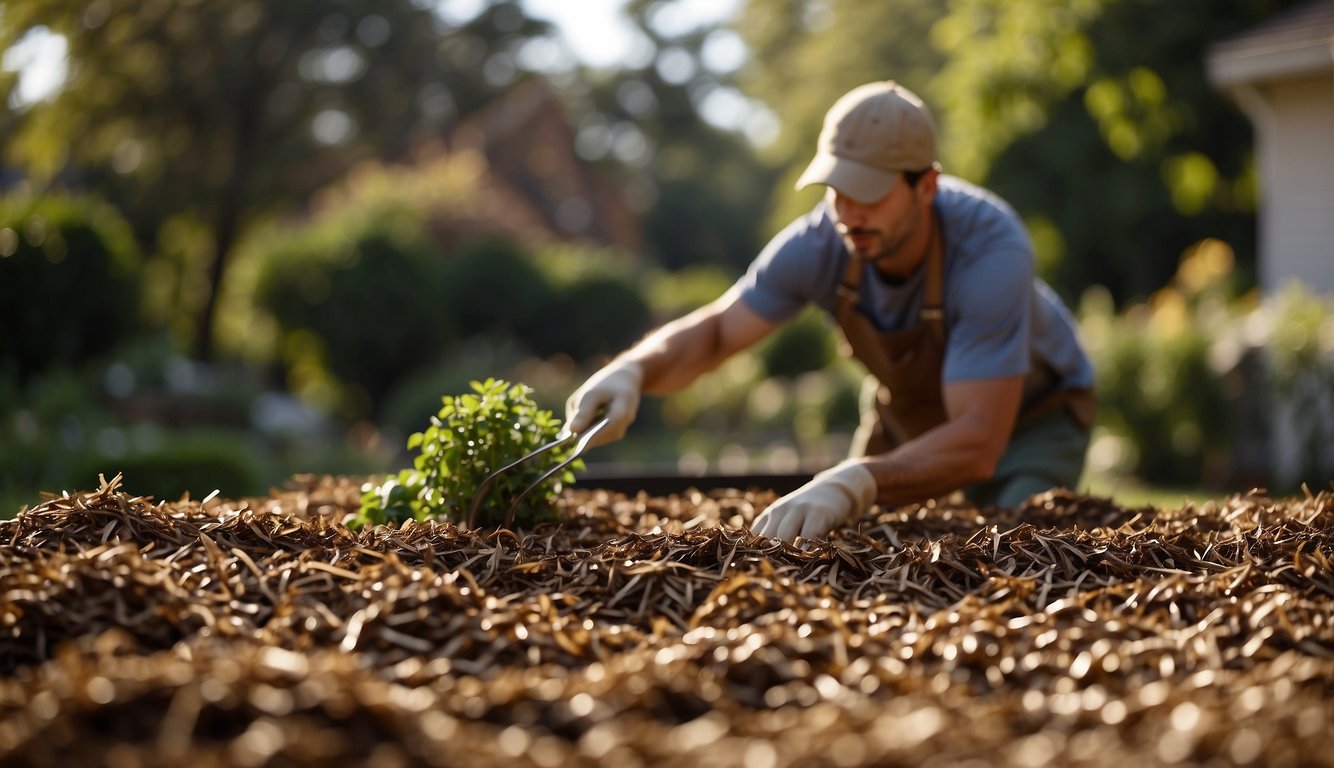
Cardboard mulch is an excellent and cost-effective way to keep your garden healthy and weed-free.
There are several ways to apply cardboard mulch, and each method has its advantages and disadvantages. In this section, I will discuss three popular methods for applying cardboard mulch.
Sheet Mulching Basics
Sheet mulching is an easy and effective way to use cardboard mulch.
It involves layering cardboard over the soil and adding organic materials on top.
The cardboard helps to smother weeds, retain moisture, and break down over time, adding nutrients to the soil.
To start, clear the area of weeds and debris. Then, lay down a layer of cardboard over the soil.
It’s best to use large sheets of cardboard, so there are fewer gaps for weeds to grow through.
Wet the cardboard down with a hose or watering can to help it settle into place.
Next, add a layer of organic material on top of the cardboard.
This can be anything from leaves and grass clippings to straw and manure.
The organic material will help to hold the cardboard in place and provide nutrients to the soil as it breaks down.
Repeat the process, alternating layers of cardboard and organic material, until you reach the desired depth.
It’s best to aim for a depth of at least six inches. Finally, water the area thoroughly to help the materials settle in.
Layering with Other Organic Materials
Another way to use cardboard mulch is to layer it with other organic materials.
This method is similar to sheet mulching, but instead of alternating layers of cardboard and organic material, you mix the two together.
To start, shred the cardboard into small pieces. You can use a garden shredder or scissors to do this.
Then, mix the shredded cardboard with other organic materials such as leaves, grass clippings, and manure.
Spread the mixture over the soil, making sure to cover the area evenly.
Water the area thoroughly to help the materials settle in.
Lasagna Gardening Method
The lasagna gardening method is a popular way to use cardboard mulch.
It involves layering organic materials in a specific order to create a nutrient-rich soil.
To start, clear the area of weeds and debris. Then, lay down a layer of cardboard over the soil.
Wet the cardboard down with a hose or watering can to help it settle into place.
Next, add a layer of organic material on top of the cardboard.
This can be anything from leaves and grass clippings to straw and manure. Make sure to cover the entire area evenly.
Repeat the process, alternating layers of cardboard and organic material, until you reach the desired depth.
It’s best to aim for a depth of at least six inches. Finally, water the area thoroughly to help the materials settle in.
Maintaining Cardboard Mulch in Your Garden
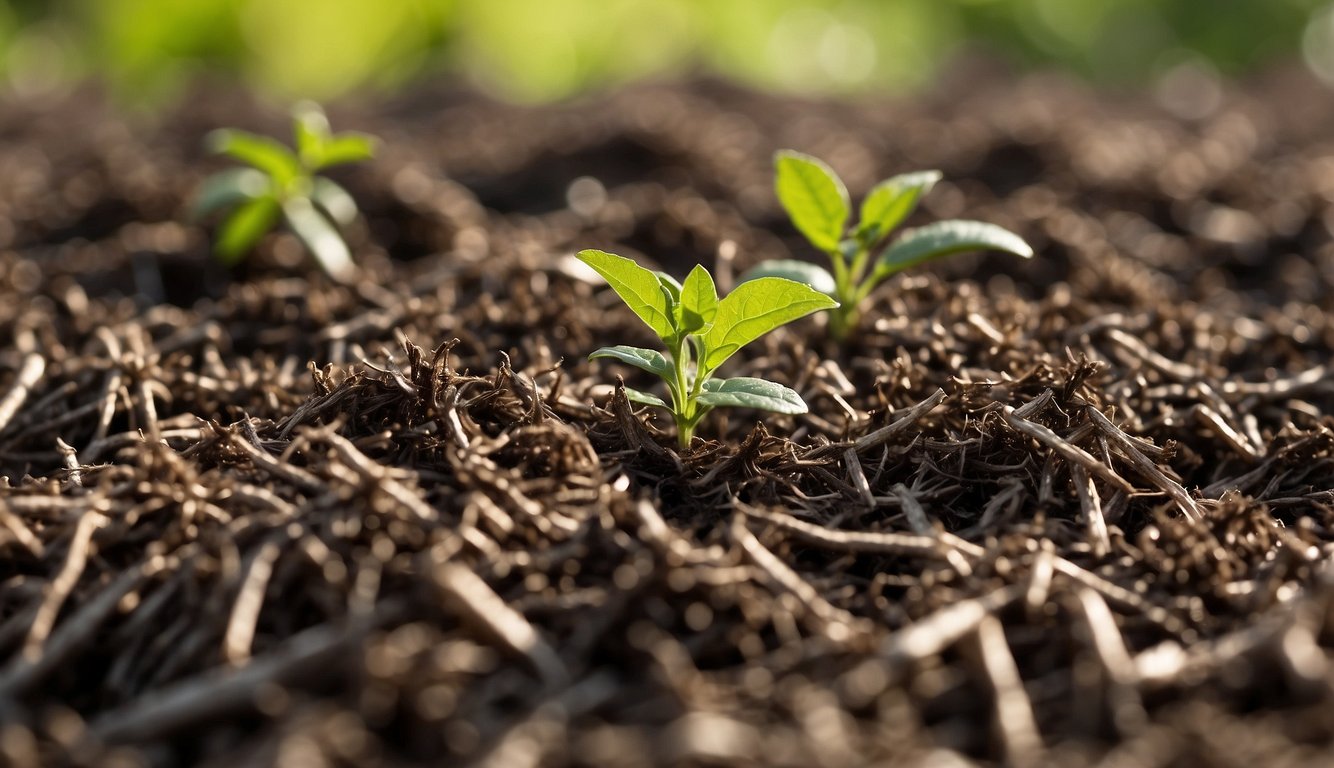
As a gardener, I find cardboard mulch to be a great option for suppressing weeds and retaining moisture in the soil.
However, it is important to monitor the moisture level and decomposition process of the cardboard to ensure it is working effectively.
In this section, I will discuss how to maintain cardboard mulch in your garden.
Monitoring Moisture and Decomposition
Cardboard mulch is effective at retaining moisture in the soil, but it is important to monitor the moisture level to prevent waterlogging.
A simple way to check the moisture level is to feel the soil beneath the cardboard. If it feels dry, it may be time to water.
On the other hand, if it feels too wet, you may need to remove the cardboard temporarily to allow the soil to dry out.
The decomposition process of cardboard mulch is also important to monitor.
As the cardboard breaks down, it adds organic matter to the soil, improving its structure and fertility.
However, if the cardboard is not breaking down fast enough, it may become a breeding ground for pests and pathogens.
To speed up the decomposition process, you can add a layer of compost on top of the cardboard.
This will introduce beneficial microorganisms that will help break down the cardboard faster.
Managing Pests and Pathogens
Cardboard mulch can attract pests and pathogens if it is not managed properly.
To prevent this, make sure to keep the cardboard moist but not waterlogged.
Pests such as snails and slugs are attracted to moist environments, so make sure to keep the cardboard mulch dry enough to discourage them.
If you notice pests or pathogens in your cardboard mulch, it may be time to remove it and add it to your compost pile.
The high temperature of the compost pile will kill any pests or pathogens, and the resulting compost will be a valuable addition to your garden.
Environmental Impact and Sustainability
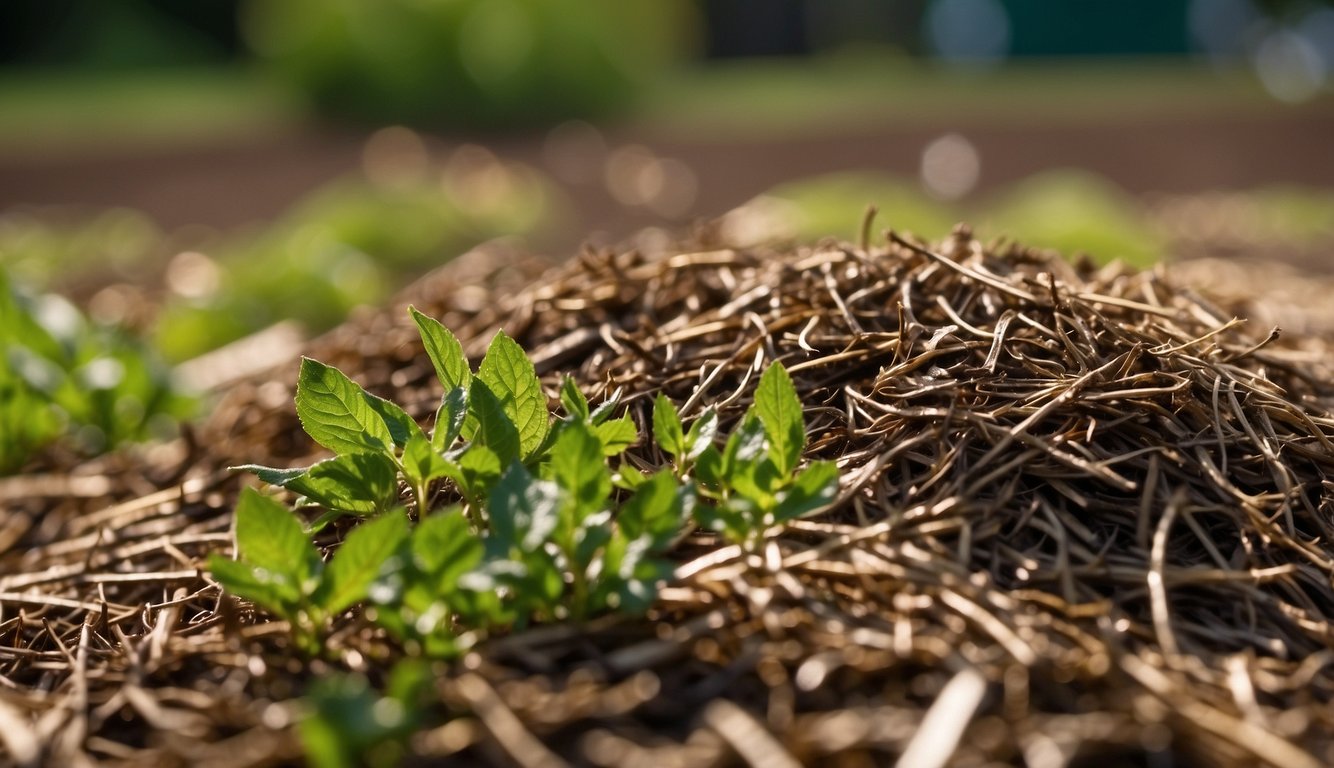
Cardboard as an Eco-friendly Mulch Option
Using shredded cardboard as a mulch has several environmental benefits.
Firstly, it is an eco-friendly option as it is made from recycled materials and is biodegradable.
This means that it does not contribute to the accumulation of plastic waste in the environment, unlike inorganic mulches such as plastic or black plastic.
Secondly, cardboard mulch can improve soil health by adding organic matter to the soil.
As the cardboard decomposes, it releases nutrients into the soil, which can promote healthy plant growth.
The added organic matter can also improve soil structure, aeration, and water retention, which can help reduce soil erosion and maintain healthy soil ecosystems.
Thirdly, using cardboard mulch can reduce the need for herbicides and pesticides, as it can help suppress weed growth.
This reduces the amount of harmful chemicals released into the environment, making it a more sustainable option for gardening.
Comparing Cardboard with Inorganic Mulches
When compared to inorganic mulches such as plastic or black plastic, cardboard mulch has a lower environmental impact.
Plastic mulches do not decompose and can remain in the environment for hundreds of years, releasing harmful chemicals and contributing to plastic waste accumulation.
In contrast, cardboard mulch is biodegradable and does not pose a threat to the environment.
Furthermore, cardboard mulch can provide similar benefits to inorganic mulches in terms of weed suppression and moisture retention.
This makes it a sustainable alternative to inorganic mulches, which can have negative impacts on soil health and the environment.
Overall, using shredded cardboard as a mulch can provide several environmental benefits, including reducing plastic waste, improving soil health, and reducing the need for harmful chemicals.
It is a sustainable option for gardeners who are looking for an eco-friendly and effective way to maintain healthy soil ecosystems.
Common Challenges and Solutions
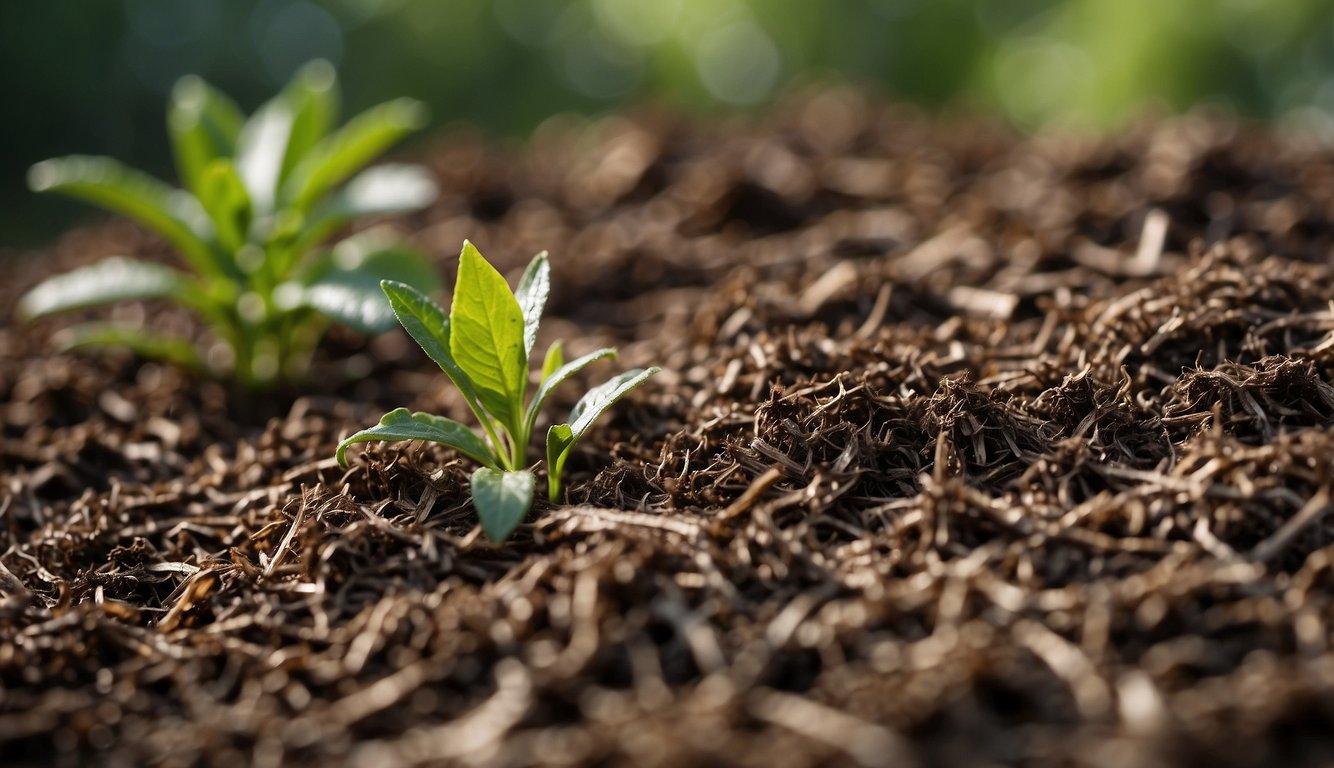
Dealing with Colored and Glossy Cardboard
One of the challenges of using cardboard as mulch is dealing with colored and glossy cardboard.
These types of cardboard are often coated with chemicals that can be harmful to plants.
To avoid this problem, I recommend using only plain, uncoated cardboard for mulching.
If you must use colored or glossy cardboard, make sure to remove any tape, staples, or other non-cardboard materials before using it as mulch.
Preventing Overcompaction and Poor Air Circulation
Another challenge of using cardboard as mulch is preventing overcompaction and poor air circulation.
When cardboard is used as a mulch layer, it can create a barrier that prevents air from circulating through the soil. This can lead to poor root growth and other problems.
To prevent this, it is important to create air pockets in the cardboard layer.
One way to do this is to use a pitchfork or garden fork to poke holes in the cardboard layer before adding the next layer of mulch. This will help to create air pockets and improve air circulation.
Another way to prevent overcompaction is to avoid using too much cardboard as mulch.
While cardboard can be an effective weed barrier, it should not be used as the only layer of mulch. Instead, it should be used in combination with other types of mulch, such as straw, leaves, or grass clippings. This will help to create a more balanced mulch layer that allows for proper air circulation and prevents overcompaction.
Tips and Tricks for Optimal Results – Shredded Cardboard Mulch
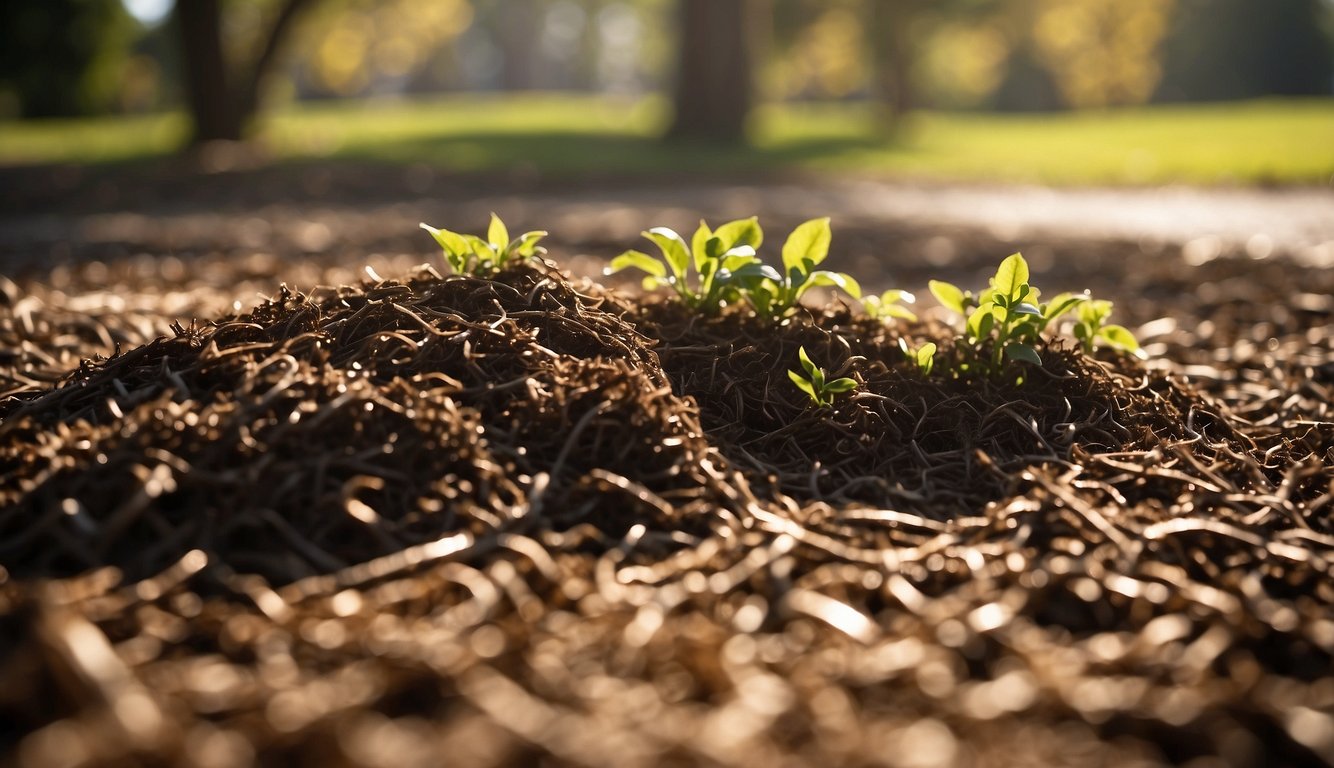
As someone who has experimented with shredded cardboard mulch in my own garden, I have discovered some tips and tricks that can help you achieve optimal results. Here are my recommendations:
Best Practices for Vegetable and Flower Beds – Shredded Cardboard Mulch
If you’re using shredded cardboard mulch in a vegetable or flower bed, there are a few things you should keep in mind.
First, make sure to remove any tape or labels from the cardboard before shredding it. These can contain chemicals that you don’t want in your garden.
Second, water the area thoroughly before laying down the cardboard. This will help it settle into place and prevent it from blowing away.
Once the cardboard is in place, cover it with a layer of compost or topsoil.
This will help to provide nutrients to your plants and encourage healthy growth.
Finally, add a layer of straw or other organic mulch on top of the cardboard.
This will help to retain moisture in the soil and prevent weeds from growing.
Creative Uses in Landscaping and Pathways
Shredded cardboard mulch can also be used in creative ways throughout your landscaping and pathways.
For example, you can use it to create a natural-looking path through your lawn or garden. Simply lay down a layer of cardboard and cover it with a layer of wood chips or other decorative mulch.
You can also use shredded cardboard mulch to create raised beds or garden beds.
Simply layer the cardboard on top of the grass or soil, add a layer of compost or topsoil, and then plant your veggies or flowers.
This is a great way to create a healthy and productive garden without having to dig up your lawn.
Layering Shredded Cardboard Mulch with TheHerbProf
Let’s explore how our Shredded Cardboard Mulch guide and the herbal wisdom at theherbprof.com can work together.
Our Shredded Cardboard Mulch guide is your first step to a sustainable garden. But what about the rest of the journey? That’s where theherbprof.com comes in. It’s your herbal encyclopedia, including mulch use in plant care!
Picture this. You’ve followed our Shredded Cardboard Mulch guide and your garden is mulched perfectly. But you’re unsure about how to use it for your plants. No problem! Theherbprof.com has all the answers. It offers a wealth of information on how to use mulch for plant care.
And there’s more! Theherbprof.com also shares the health benefits of various herbs. So, while you’re mulching your garden, you’re also discovering the power of herbs.
So, let’s get mulching with our Shredded Cardboard Mulch guide and let theherbprof.com guide us on this gardening journey.
References – Shredded Cardboard Mulch
Little Herb Encyclopedia, by Jack Ritchason; N.D., Woodland Publishing Incorporated, 1995
The Ultimate Healing System, Course Manual, Copyright 1985, Don Lepore
Planetary Herbology, Michael Tierra, C.A., N.D., Lotus Press, 1988
Handbook of Medicinal Herbs, by James A. Duke, Pub. CRP Second Edition 2007
The Complete Medicinal Herbal, by Penelope Ody, Published by Dorling Kindersley
Check the Following Articles!
Types of Tomatoes: The Mega Guide to Tomato Varieties
Vegetable Beets: A Nutritious Root Vegetable for Your Diet
Natural Ant Deterrent: Effective Solutions for Your Home
Potatoes Roots Growing Out of Them Explained!
Frequently Asked Questions – Shredded Cardboard Mulch
Is cardboard mulch potentially toxic to plants or soil?
Cardboard mulch is not toxic to plants or soil. In fact, it is an eco-friendly and cost-effective way to maintain a healthy garden.
However, it is important to use plain, uncoated cardboard as coated cardboard may contain harmful chemicals that can leach into the soil and harm plants.
What are the advantages and disadvantages of using shredded cardboard as mulch?
One advantage of using shredded cardboard as mulch is that it is an effective weed suppressant.
It also helps to retain moisture in the soil, which can reduce the need for watering.
Additionally, it provides a slow-release source of carbon and nitrogen to the soil as it decomposes.
However, one disadvantage is that it can take a long time to decompose, which can make it difficult to till or turn over the soil.
How does cardboard mulch help in weed prevention?
Cardboard mulch works by smothering weeds and preventing them from getting sunlight.
By blocking out the light, the weeds are unable to photosynthesize and eventually die.
Additionally, the cardboard can act as a physical barrier that prevents weed seeds from germinating.
What is the purpose of placing cardboard under layers of mulch?
Placing cardboard under layers of mulch helps to suppress weeds and retain moisture in the soil.
The cardboard also provides a slow-release source of carbon and nitrogen to the soil as it decomposes.
Additionally, it can help to improve soil structure and fertility over time.
Could using cardboard as mulch attract termites or other pests?
Using cardboard as mulch is unlikely to attract termites or other pests.
However, it is important to use plain, uncoated cardboard as coated cardboard may contain harmful chemicals that can leach into the soil and attract pests.
What is the decomposition rate of cardboard when used under mulch?
The decomposition rate of cardboard when used under mulch depends on various factors such as the thickness of the cardboard, the type of mulch used, and the climate.
In general, it can take several months to a year for cardboard to decompose completely. However, during this time, it can provide a slow-release source of carbon and nitrogen to the soil.
